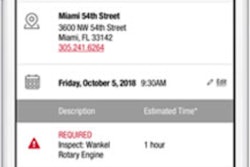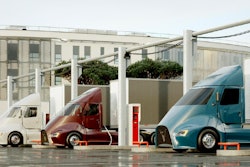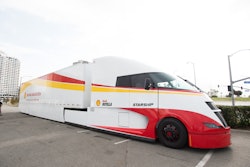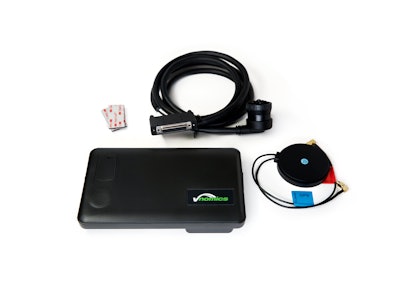 Vnomics True Fuel hardware installs in the cab to give drivers fuel coaching
Vnomics True Fuel hardware installs in the cab to give drivers fuel coachingConnecting a telematics system to an electronically controlled engine opens up access to fuel performance data on drivers and trucks, but an important piece is missing.
Actual fuel results and driving behaviors are helpful to know, but what should vehicles and drivers be able to achieve given the varying conditions of weather, payload, topography, traffic patterns and other factors?
Several technology suppliers have tapped into the heart of fuel performance data to calculate realistic fuel targets and share them with drivers and fleet managers in ways that change behaviors and empower fuel-saving decisions.
Reaching the potential
One such product is True Fuel from Vnomics. Its machine learning algorithms determine the fuel potential of vehicles — the optimal amount of fuel required to do the work at any given time.
By knowing the potential, True Fuel is able to score drivers using a fair and transparent measure of individual fuel efficiency independent of vehicle, load and route, explains Alan Farnsworth, chief executive of Vnomics.
Hardware in the vehicle gives drivers audible tones when they exceed thresholds for fuel-efficient behaviors in speeding, idling and engine control (RPMs). True Fuel also has cellular connectivity with a data center that powers a web-based management portal.
Recently, Vnomics added a product extension that makes it easy for fleets to deploy an automated driver recognition, incentive and rewards program based on fuel efficiency.
“Fuel prices are going up, driver scarcity is an issue everywhere, and getting drivers and fleets aligned when it comes to fuel efficient driving is a challenge that True Fuel is uniquely positioned to address,” he said.
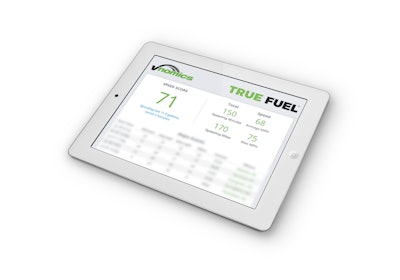 Vnomics calculates a daily score for drivers that shows how they performed compared to their potential.
Vnomics calculates a daily score for drivers that shows how they performed compared to their potential.True Fuel has an automated ROI calculator that fleets can use to predict the payback period and determine “gain share” formulas for driver fuel incentives, he says.
The system has a new mobile app that conveys feedback to drivers immediately after every shift. Drivers can see if they are on pace to hitting the fleet driver efficiency target and the app displays a detailed trip-by-trip log of location, mileage, time, fuel burned and driver efficiency.
The app shows drivers their month-to-date efficiency compared to the target and has granular feedback on what they can do to improve in a visual format, Farnsworth explains.
Gaining insights
With True Fuel’s management portal, fleets have a dashboard of fuel performance metrics they can group in a variety of ways. Some dashboard metrics include scores for driver efficiency (normalized on a 0-100 scale); categories of fuel efficiency — engine speed control, highway speeding, idling, truck gearing vs. task at hand; and the quantified gallons of fuel wasted in each category of efficiency.
Fleet managers can also view miles, gallons consumed and the calculated MPG (based on fuel flow rate), and the potential MPG for each vehicle.
One of the most unique metrics is the “time saved” versus the extra gallons burned during excessive highway speed events.
“In other words,” Farnsworth notes, “drivers and fleet managers can see how much time they actually saved compared to the amount of fuel wasted in gallons and dollars by over-speeding on the highway.”
With this metric, managers and drivers can diffuse the “I had to go fast!” argument to reach their destination on time, he says.
Fuel-saving decisions
Besides tracking fuel lost due to inefficient driver behaviors, True Fuel’s ability to quantify the potential MPG of a particular vehicle when properly driven, independent of driver behavior and other variables, can be used to test the fuel impact of a wide range of devices and technology.
Farnsworth says fleets are using the data to inform new truck purchase decisions, as well as to test the impact of trailer skirts and under-carriage devices. This is possible by assessing change in actual and potential mpg to find the contribution of the device being tested.
One of its customers has used True Fuel data to precisely quantify the impact of raising governed speed.
“We were able to calculate exactly how much this would cost in additional fuel spend, so that they could compare that cost to their perceived driver relationship benefit,” Farnsworth said. “In the end they decided not to do it.”



